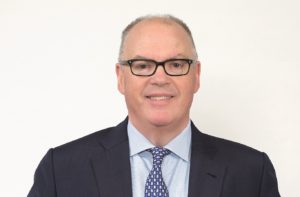Middle East Sovereign Investors Cool On Equities, Look Towards Fixed Income Alternatives And Europe: Invesco Study
Invesco today released its eighth annual Global Sovereign Asset Management Study, an in-depth report which details the views of139 chief investment officers, heads of asset classes and senior portfolio strategists at 83 sovereign funds and 56 central banks, who together manage $19 trillion USD in assets*.
Crisis presents opportunities, but equities overlooked
The Study reveals that many sovereigns, including those in the Middle East, were well prepared for the COVID-19 crisis, with a drop in valuations and plenty of excess cash making the crisis an unprecedented buying opportunity. As custodians of long-term capital, most also benefited from the lack of an imperative to sell to meet withdrawals. Sovereigns were also better prepared due to changes they implemented and lessons they learned from the Global Financial crisis (GFC). This included building large cash reserves and making organizational improvements for the management of liquidity.
In 2019, 75% of Middle East sovereigns reported outperforming their targets. However, even before COVID-19 affected markets, investors exhibited caution. Average equity allocations as an overall proportion of the portfolioat the end of 2019 were16%, compared with 34% to illiquid alternatives and 32% to direct strategic investments. Globally, equity asset allocations were at their lowest level since 2013 both relative to fixed income and as an overall proportion of asset allocation: 26% (equities) vs 34% (fixed income). The movement away from equities was motivated in part by end-of-cycle concerns that led to decreasing strategic allocations. Looking forward, 43% of Middle East sovereigns expect to increase allocations to equities over the next 12 months at lower valuations, with29% of sovereigns aiming to decrease equity allocations.
Investors instead target fixed income – particularly illiquid alternatives
Over the next 12 months sovereigns in the Middle East plan to continue allocating to fixed income;57% aim to increase their fixed income allocations, 43% to infrastructure, 50% to private equity .
“Traditionally, fixed income is seen as a defensive anchor and this was tested by the crisis with even US government debt caught up in a broad sell off as investors rushed into cash. However government interventions including rate cuts and global quantitative easing forced down yields and had a positive impact on many fixed income portfolios” said Rod Ringrow, Head of Official Institutions at Invesco.
Middle East sovereigns continue to express their appetite for expanding their alternative fixed income allocations. Many Middle East sovereigns have well developed internal teams that are well equipped to manage these strategies, and in some cases run them internally. Eighty-six percent have allocations to real estate debt, 71% to infrastructure debt and 71% to asset backed securities/structured credit. Emerging market debt has wide appeal among regional investors, with 71% of the respondents having EM debt allocations.
“We see investors looking at less traditional credit assets such as emerging market debt as they look for portfolio diversification to boost returns,” said Zainab Kufaishi, Head of Middle East and Africa at Invesco. “Emerging markets have become better developed and more accessible, which is driving increased interest.”
COVID-19 also accelerated the existing trend towards infrastructure projects by creating potential distressed opportunities. Many investors have considered infrastructure investments expensive due to the abundance of capital chasing relatively few deals. But some see the current situation as an opportunity to take advantage of selling in sub-sectors, such as airports. Within the infrastructure asset class, Middle East sovereigns report the highest level of interest in communications (78%)and airports (56%).
Sovereigns in the Middle East were more likely to be looking to Europe for bargains, with 38% increasing exposure to emerging Europe and 38% to developed Europe. “The market turmoil in March and April saw asset prices fall considerably, especially as some investors sold securities to ensure liquidity. This presented opportunities to gain exposure to ‘blue chip’ companies at very good prices,” said Ms. Kufaishi.
COVID-19 brings a rising interest in gold
This year’s study saw both central banks and a small but significant group of global sovereigns increase their allocations to gold. On average, 4.8% of total central bank reserve portfolios are now allocated to gold – up from 4.2% in 2019 – with almost half (48%) of banks citing a potential to replace negative yielding debt as a primary advantage. This was seen as the most important reason for moving into gold, more so than commonly-understood reasons such as diversification, return and its role as an inflation hedge. While central banks often approach gold with a pre-existing allocation, the starting position for sovereigns is rarely the same. For many sovereigns gold is seen as a powerful inflation and tail hedge, with positive correlations in risk-on scenarios but barely correlated/negatively during a risk-off scenario.
Four-fifths of central banks choosing to increase allocations to gold are funding the move from existing USD assets – significantly more than from those in EUR and GBP. This highlights a major problem faced by central banks looking to diversify away from USD without sacrificing liquidity and convertibility. This trend was particularly prominent among emerging market banks, where almost 90% were drawing on USD allocations to boost gold reserves.
Sovereigns investing in gold have several options. While physical gold is still used by some, more flexible approaches are being considered. Futures are used by 40% of sovereign gold investors with respondents pointing to the flexibility and returns that can be achieved through skilful trading. Meanwhile, 40% of sovereigns investing in gold gain exposure through gold-backed ETFs. These vehicles have grown significantly in recent years – 80% over the past year alone**. ETFs are also an option for central banks. For banks looking to increase exposure without adding significantly to domestic holdings, or take on the credit risk of a bullion bank, ETFs are likely to be increasingly attractive. Furthermore, given the potential political challenges of trading gold, ETFs could offer a politically more acceptable means to trade the asset class.
“Last year’s study found gold to be growing in popularity, but COVID-19 has revealed it as an asset class now staking a claim to a new role within sovereign portfolios. We also found that physical gold doesn’t answer all liquidity needs, prompting both central banks and sovereigns to look closely at gold backed ETFs,” added Mr. Ringrow,“and we think the development of these alternative modes of investment is likely to increase interest in gold in the coming years.”
Climate change a growing concern, prompting greater investor focus
The study revealed that 83% of central banks and sovereigns globally believe immediate action is required to combat climate change, and this is increasingly being translated into investment strategies with an understanding that climate-related risk should be embedded into the wider investment process.
The single greatest concern globally is a rising number of natural disasters. Investors tend to be concerned by the risks that directly threaten them, so views differ significantly according to region. Western investors are the most conscious of the transition to a low-carbon economy, given the numbers that have considerable exposure to metals and mining, integrated oil & gas and oil exploration. 85% of Asian and 77% of Middle East investors consider themselves to be disproportionately affected by climate change, far more than the West 33%. Middle East investors highlighted concerns around climate-based risks such as changes in oil demand, rising temperatures and water supply.
“Many sovereign entities in this region are beginning to give these issues more attention through organisational-level commitments and membership of international bodies and government-sponsored initiatives,” said Ms. Kufaishi. “Some of the largest funds are very prominent in their actions, but in many cases the commitments take time to feed down into the investment process.”
Obstacles towards further ESG adoption
Respondents found that while regulation presents clear guidelines for companies, they often lack implementable guidelines for investors. Some central banks are addressing this but many argue that to increase engagement, mandates and policies must be restructured to consider climate change risks as several banks are constitutionally prohibited from doing so. Clearer guidelines are also needed for sovereigns. Respondents suggested that public officials need to clarify definitions, outline methods of adoption, and set parameters around carbon emissions targets for their portfolios.
Mr. Ringrow added: “We’re pleased to see sovereigns and central banks continuing to build climate concerns into their investment decisions and developing capabilities to detect and mitigate climate risks. To take the next step, broader buy-in will be needed from policymakers and other investors. This, coupled with new, creative solutions, can compel other investors to look at climate risks more closely.”








